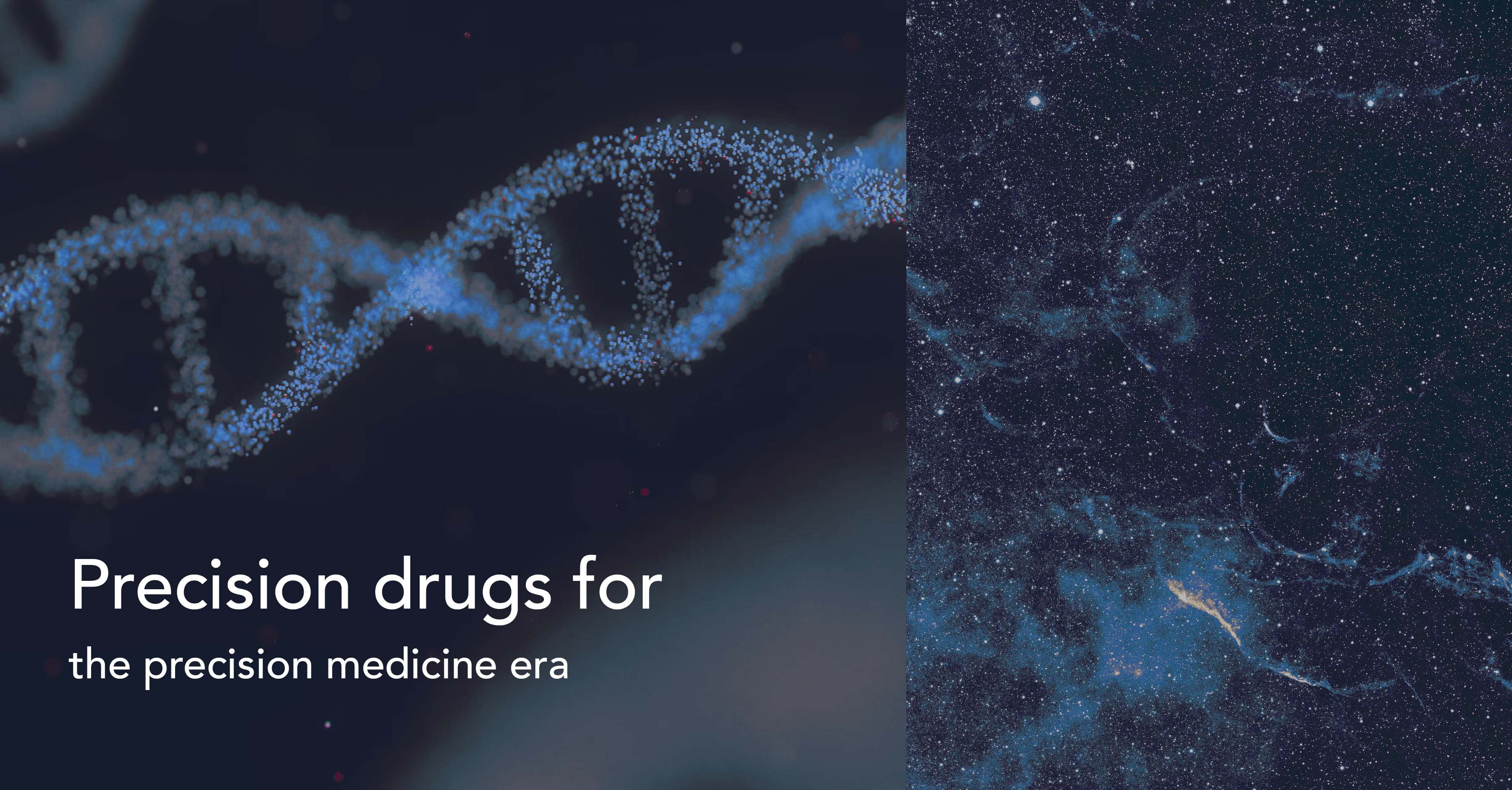Precision drugs for the precision medicine era

Currently, chemotherapy, using cytotoxic small molecules to kill cancer cells, is the predominant conventional cancer treatment. Despite the clinical benefits of this approach, there are several factors, including low selectivity and high toxicity to normal cells, that limit its therapeutic efficacy. Since many powerful anti-cancer drugs are nonspecific, they tend to create adverse side effects and are therefore rendered too toxic for clinical use.
In the era of precision medicine, oncology is transitioning from a universal approach, such as chemotherapy, to treatments tailored to specific molecular profiles and targets. Today, a more in-depth understanding of tumor biology has enabled the classification of patient subpopulations with actionable alterations across cancer types. This has shifted oncology drug development towards tissue-agnostic, biomarker-driven treatments that target specific molecular alterations. And antibody-drug conjugates (ADCs) are a premier example of this personalized approach to cancer treatment.
ADCs and precision oncology
Over the past few decades, the therapeutic application of monoclonal antibodies (mAbs) has played a significant role in the shift towards tailoring therapies with the highest safety margin to specific patient subgroups. ADCs, one of the fastest growing drug classes in oncology, address the limitations of chemotherapy, or monoclonal antibody therapy, by providing a means of targeting the vulnerability of cancer cells.
ADCs, considered the ‘homing missiles’ of cancer therapy, represent the optimal combination of mAbs and small molecule drugs to create a single, highly specific, and cytotoxic moiety. These missiles comprise three structural components: an mAb directed toward a target antigen expressed on the tumor cell surface, a cytotoxic payload, and a cleavable or non-cleavable chemical linker. Together these components enable selective delivery of toxic chemotherapeutic payloads, which cannot be administered systemically, to preferentially expressed target antigens in tumors.
ADCs are at the forefront of expression-based therapy in oncology, designed to specifically target disease cells without affecting healthy tissues. In the shift towards precision medicine in oncology, antibody-based therapeutics have accelerated the evolution from conventional chemotherapy to molecularly targeted medicine and are constantly evolving with new proof-of-concept formats.
As of last year, there are 14 ADC drugs available worldwide, with many more in preclinical and clinical development. Apart from ADCs, antibody-based therapeutics are also emerging in a wide range of innovative and diverse forms, including bispecific antibodies and nanobodies. The development of bispecific antibodies (BsAbs), antibodies directed against two different antigens or two different epitopes on the same antigen, expands the choice of partner antibodies for ADCs. And bispecific ADCs (BsADCs) could help address issues related to endocytosis, toxicity, and drug resistance of ADC drugs. Currently, there are seven BsADCs approved by the Federal Drug Administration (FDA) and the European Medicines Agency (EMA), with over 200 in preclinical development and clinical trials.
ADCs - challenges and limitations
Despite their expanding potential and popularity, there is still a large discrepancy between the number of ADCs in pharmaceutical pipelines and the proportion that actually reach late-stage trials. There are still significant challenges in augmenting their therapeutic value in terms of improving efficacy, assuring safety, and reducing toxicity.
Here’s a quick overview of the 5 key challenges in ADC development:
- Off-target toxicity: It is estimated that only 0.1% of ADC warheads reach the tumor tissue. The challenge, therefore, is to ensure that the remaining 99.99% of cytotoxic small molecules are not prematurely released into the bloodstream. This risk of off-target or systemic toxicity is reduced when there is a sufficiently stable link between the warhead and the antibody. The goal is to optimize stability and payload release efficiency, while assuring the linker connecting the antibody to the drug is stable in circulation and still cleaved efficiently inside the target cell to produce the intended antitumor activity.
- Aggregation: ADCs are prone to aggregation and there are several factors that can increase the propensity of antibodies to aggregate. Protein aggregation is a major obstacle as it can occur during any stage of the development cycle as well as during transportation and long-term storage. Managing ADC aggregation is one of the biggest challenges in ADC development. In the initial stages, ADC aggregation causes structural modification that can limit the ability of the protein to bind to the antigen. Degradation by aggregation also presents a major challenge as it can affect the medicine's ability to meet the regulatory guidelines for stability testing.
- Drug resistance: The failure or ineffectiveness of ADC treatments, known as drug resistance, has been a key limitation in their clinical success. In the case of ADCs, resistance can theoretically mean resistance to each structural component such as the mAb and the cytotoxic agent. Since these are targeted therapeutics, resistance could also be the result of fluctuations in the antigen levels detected by the mAb. In addition, drug efflux pumps, and even the activation of downstream signaling pathways, could lead to ADC resistance.
- Immunogenicity: Many biotherapeutic modalities, including ADCs, pose an immunogenicity risk as they carry non-native human protein sequences and/or structural motifs. For instance, the immunogenicity of many early ADCs was associated with the use of murine mAbs or bacteria and plant-derived protein toxins. Moreover, the hapten-like structure of ADCs itself could theoretically affect immunogenicity. Even though most modern ADCs constitute human or humanized mAbs and small-molecule payloads, their hapten structure could still potentially increase immunogenicity.
- Drug Antibody Ratio: DAR, or the number of drug molecules conjugated to a single ADC, is a critical determinant of efficacy as well as immunogenicity of ADCs. The DAR essentially defines the pharmacokinetic properties of an ADC: a higher DAR increases immunogenicity risk whereas reducing DAR could lower ADC efficacy. The challenge, therefore, is to achieve the right balance between toxicity and delivery. Another important consideration is site-specific conjugation, which again has pharmacokinetic and therapeutic implications. The focus therefore, has to be on achieving a consistent DAR together with site-specific conjugation in order to develop a safe and effective ADC product.
ADCs beyond oncology
There are still several complexities and challenges that have to be addressed in the ADC development process before they can be more extensively integrated into clinical treatments. However, given the current pace of research into ADC technology, cancer biology, pharmacology, etc., ADC drugs are already ushering in a new era of precision medicine in oncology.
The next evolutionary step would be to explore the potential of these targeted therapeutics outside the oncological ecosystem. Here again, steady progress is being made to expand the ADCs to non-oncological indications such as autoimmune and infectious diseases such as atherosclerosis, bacteremia, and inflammatory diseases.
But even as all of this unfolds, it is abundantly clear that ADCs represent a new age in precision drugs for the precision medicine era.
Subscribe to our Blog and get new articles right after publication into your inbox.
Subscribe to our blog:






